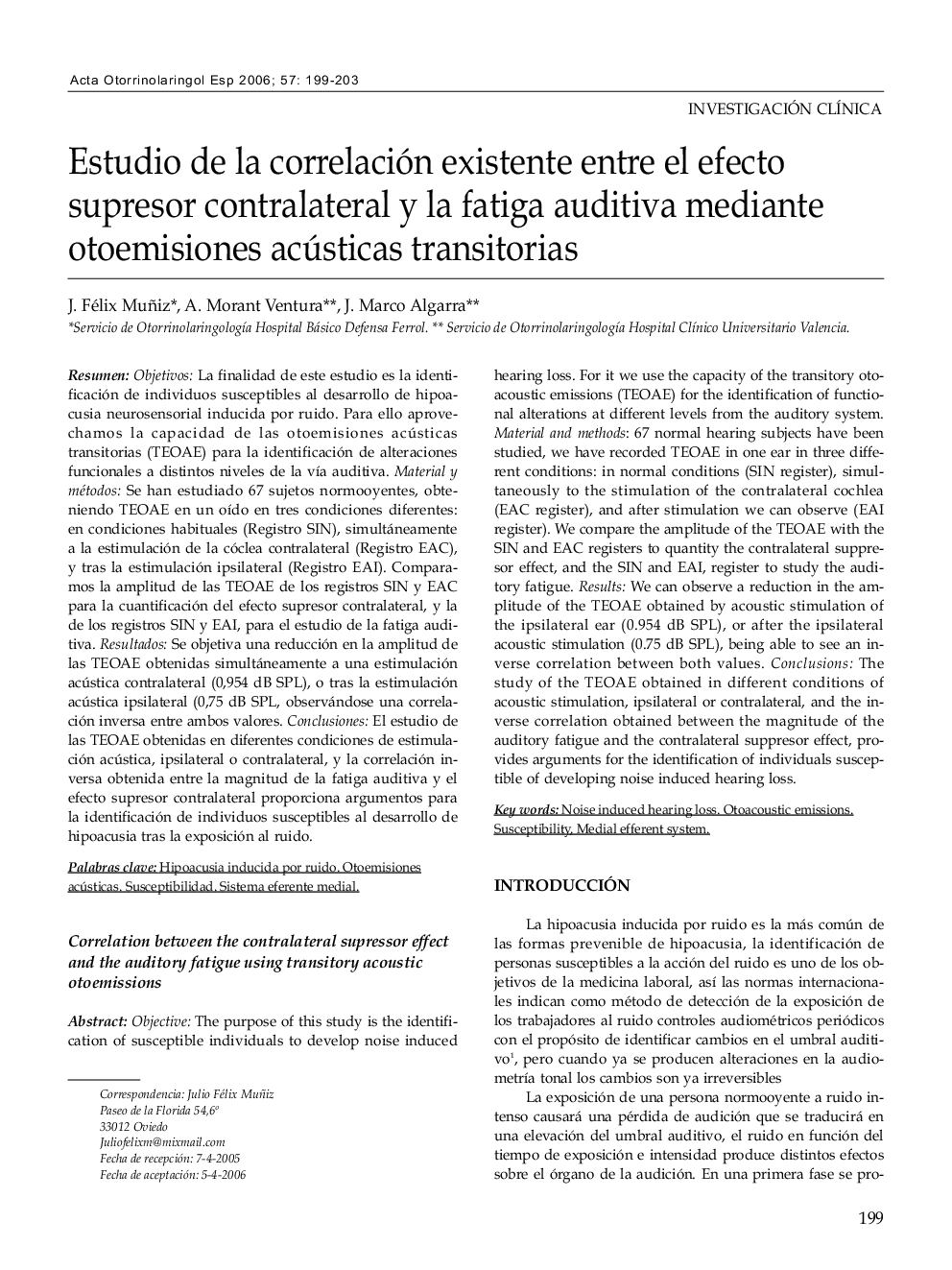| Article ID | Journal | Published Year | Pages | File Type |
|---|---|---|---|---|
| 4102725 | Acta Otorrinolaringológica Española | 2006 | 5 Pages |
ResumenObjetivosLa finalidad de este estudio es la identificación de individuos susceptibles al desarrollo de hipoacusia neurosensorial inducida por ruido. Para ello aprovechamos la capacidad de las otoemisiones acústicastransitorias (TEOAE) para la identificación de alteraciones funcionales a distintos niveles de la vía auditivaMaterial ymétodosSe han estudiado 67 sujetos normooyentes, obteniendo TEOAE en un oído en tres condiciones diferentes: en condiciones habituales (Registro SIN), simultáneamente a la estimulación de la cóclea contralateral (Registro EAC),y tras la estimulación ipsilateral (Registro EAI). Comparamos la amplitud de las TEOAE de los registros SIN y EAC para la cuantificación del efecto supresor contralateral, y la de los registros SIN y EAI, para el estudio de la fatiga auditivaResultadosSe objetiva una reducción en la amplitud de las TEOAE obtenidas simultáneamente a una estimulación acústica contralateral (0,954 dB SPL), o tras la estimulación acústica ipsilateral (0,75 dB SPL, observándose una correlación inversa entre ambos valoresConclusionesEl estudio de las TEOAE obtenidas en diferentes condiciones de estimulación acústica, ipsilateral o contralateral, y la correlación inverse obtenida entre la magnitud de la fatiga auditiva y el efecto supresor contralateral proporciona argumentos para la identificación de individuos susceptibles al desarrollo de hipoacusia tras la exposición al ruido
ObjectiveThe purpose of this study is the identification of susceptible individuals to develop noise induced hearing loss. For it we use the capacity of the transitory otoacoustic emissions (TEOAE) for the identification of functional alterations at different levels from the auditory systemMaterial and methods67 normal hearing subjects have been studied, we have recorded TEOAE in one ear in three different conditions: in normal conditions (SIN register), simultaneously to the stimulation of the contralateral cochlea (EAC register), and after stimulation we can observe (EAIregister). We compare the amplitude of the TEOAE with the SIN and EAC registers to quantity the contralateral suppressor effect, and the SIN and EAI, register to study the auditory fatigueResultsWe can observe a reduction in the amplitude of the TEOAE obtained by acoustic stimulation of the ipsilateral ear (0.954 dB SPL), or after the ipsilateral acoustic stimulation (0.75 dB SPL), being able to see an inverse correlation between both valuesConclusionsThestudy of the TEOAE obtained in different conditions of acoustic stimulation, ipsilateral or contralateral, and the inverse correlation obtained between the magnitude of the auditory fatigue and the contralateral suppresor effect, provides arguments for the identification of individuals susceptible of developing noise induced hearing loss
